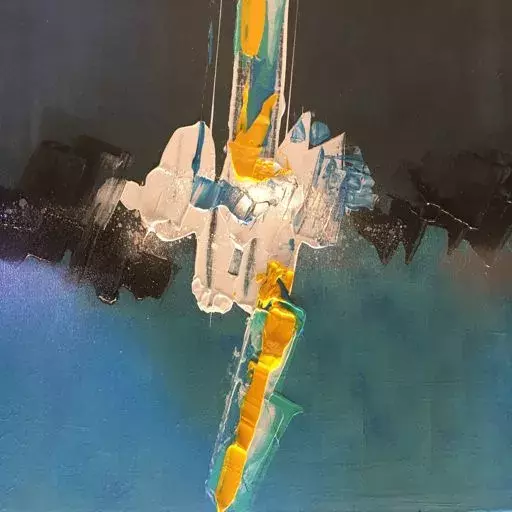I’ve watched a lot of resources about toner transfer over the last few days, and while everything was quite experimental and empirical, the main gist was : heat + pressure = toner transfer. As I didn’t want to, for obvious reasons, cook a dial full of unknown glues, paints and metals in the family’s kitchen oven, I started experimenting with my printer’s bed.
So I made a janky setup. I printed my design mirrored on a laser-compatible transparency sheet, cut it to size, secured it on a sterile dial with a bit of Kapton and cut a bit of rubber to try and spread pressure evenly. I then clamped the contraption to my printer’s heated bed.
Advantages: It’s basically free if you already have a laser printer, transparencies and a 3d printer laying around.
Inconvenients: It looks absolutely unprofessional up close. At regular wrist distance, it’s fine.
My first attempt was 30 minutes at 100°C. Way too much heat and/or pressure, the printing was smooshed and uneven pressure meant that parts of the design didn’t transfer properly. The sheet’s cutout shape was clearly imprinted on the glossy dial.
My second attempt (pictured here) was 15 minutes at 95°C. Much crisper lines and if not for a tiny bit of the logo that didn’t transfer (probably a speck of dust underneath), would have been perfect. The sheet’s cutout shape was still slightly imprinted on the glossy dial, on matte dials it might not be visible.
This process deserves to be refined as it brings an easy way to customize dials if you’re not aiming at super macro beauty shots, unfortunately I don’t have any spare dials anymore to experiment. I think a lower temperature and/or a lower pressure might work even better.
Edit: Here are my two attempts at making this dial:


Might have used the bed for accelerating PCB etching :)
If you can clamp a whole PCB on the bed, that’s a perfect application ;)